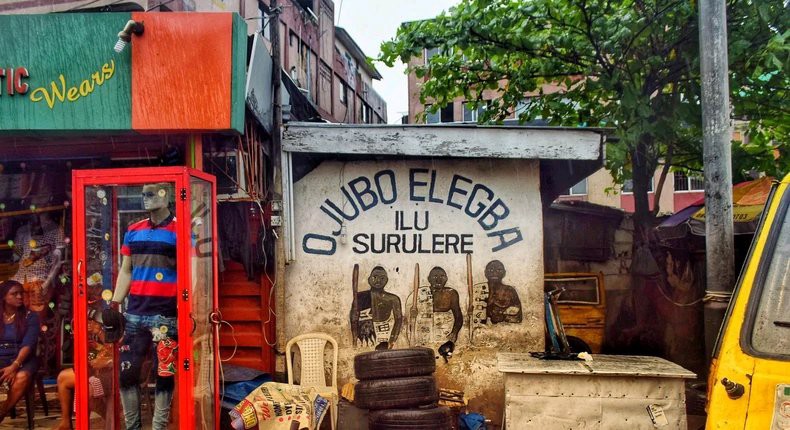This is the backstory of Ojuelegba.
In the 1970s, Fela’s Shrine, a party hub, made the Ojuelegba famous, but it has even deeper historic roots.
“Ni Ojuelegba o, they know my story,” Wizkid famously sang but what is it about Ojuelegba and what makes it special?
Ojuelegba is at a special location in Lagos State, Nigeria. It connects Surulere, Yaba and Mushin and also links Apapa Wharf to Ikorodu and Agege.

The area currently known as Ojuelegba was formerly a forest and shrine used to worship Eshu Elegbua or Legba. This deity is also worshipped by the Fon people of the Benin Republic, the Cubans and Haitians.
The Haitians call the Legba deity, Papa Legba. He is a fatherly figure that opens the human world for the spirit to enter. The Fon people call it Legba and Cubans call it Echu-Elegua.
Under the Ojuelegba bridge, the Aworis worshipped the Esu diety known as Láàlu ogiri òkò – a deity in charge of orderliness and an enforcer of laws.
Its shrine was made of red earth and stones and covered with cowries. These cowries were used to mark the god’s eyes and mouth, and daily sacrifices were offered to it.
The shrine still exists today, right there at the south of the Ojuelegba roundabout with the inscription, ‘Oju-Ibo Elegba’ which has now been shortened to Ojuelegba – presumably how the area got its name.

The Ojuelegba Bridge view [Wikicommons]
The Ojuelegba Bridge view [Wikicommons]
Fela singing about Ojuelegba said,
“For Ojuelegba, for Ojuelagba
Moto dey come from south
Moto dey come from north
Moto dey come east
Moto dey come from West
And policeman no dey for centre.”



